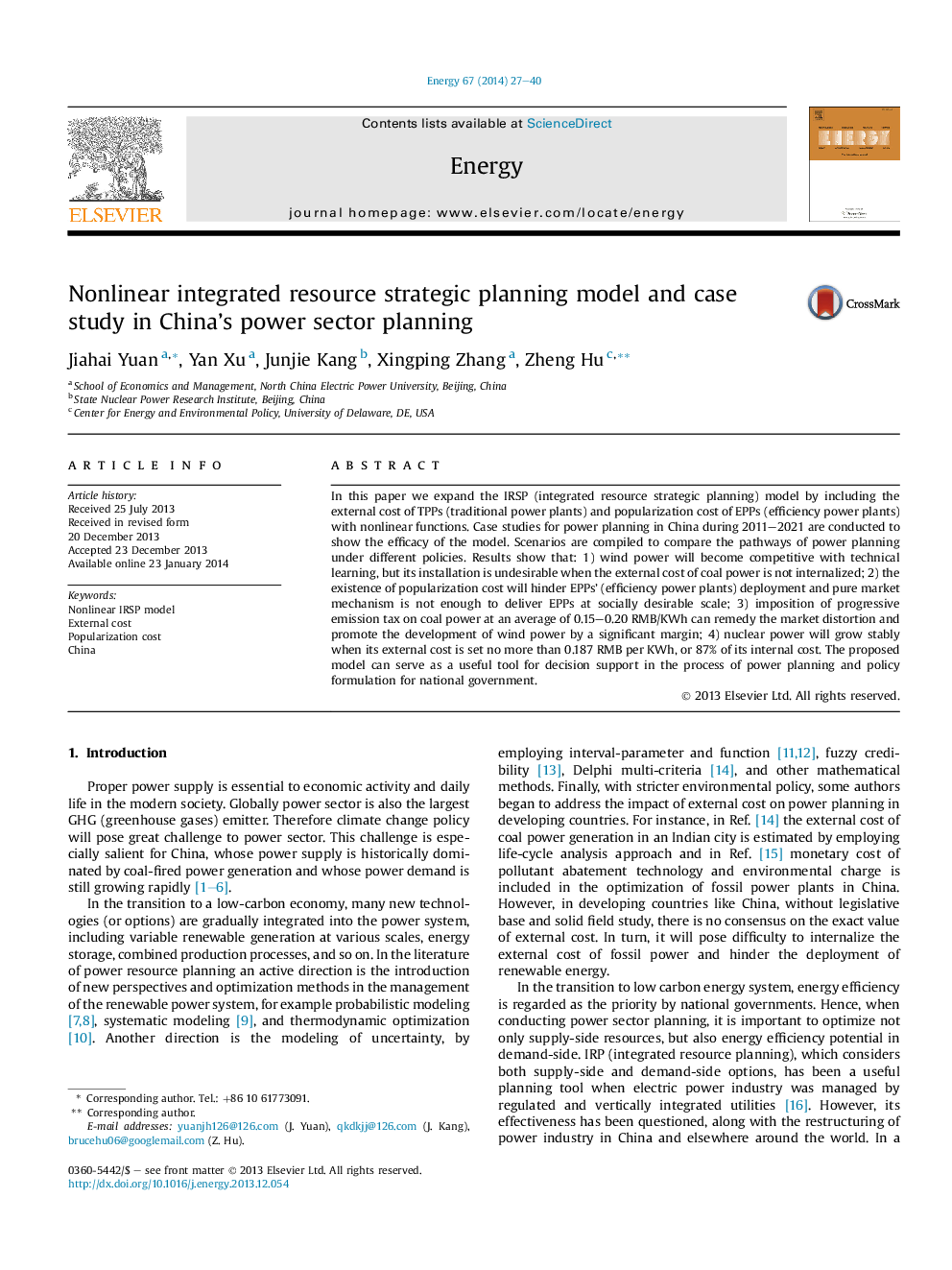| Article ID | Journal | Published Year | Pages | File Type |
|---|---|---|---|---|
| 1732536 | Energy | 2014 | 14 Pages |
•Improve IRSP model by adding nonlinear external and popularization cost.•The model is used to conduct China's power sector planning in 2011–2021.•Simulate the impacts of alternative energy policies on planning results.•The model can be used for joint power sector planning and policy design.
In this paper we expand the IRSP (integrated resource strategic planning) model by including the external cost of TPPs (traditional power plants) and popularization cost of EPPs (efficiency power plants) with nonlinear functions. Case studies for power planning in China during 2011–2021 are conducted to show the efficacy of the model. Scenarios are compiled to compare the pathways of power planning under different policies. Results show that: 1) wind power will become competitive with technical learning, but its installation is undesirable when the external cost of coal power is not internalized; 2) the existence of popularization cost will hinder EPPs' (efficiency power plants) deployment and pure market mechanism is not enough to deliver EPPs at socially desirable scale; 3) imposition of progressive emission tax on coal power at an average of 0.15–0.20 RMB/KWh can remedy the market distortion and promote the development of wind power by a significant margin; 4) nuclear power will grow stably when its external cost is set no more than 0.187 RMB per KWh, or 87% of its internal cost. The proposed model can serve as a useful tool for decision support in the process of power planning and policy formulation for national government.
